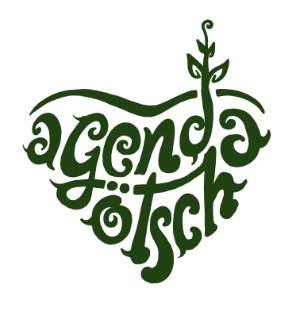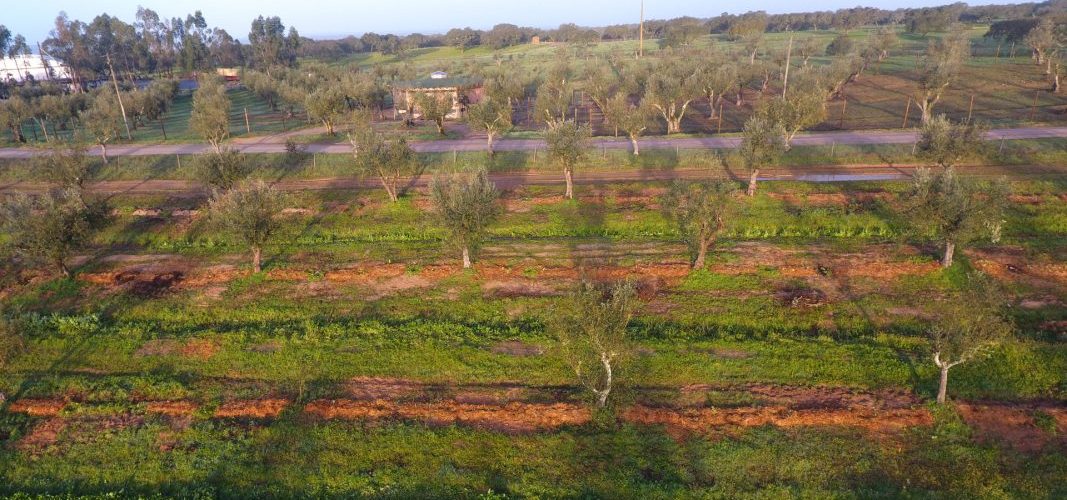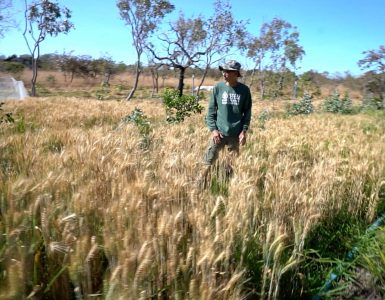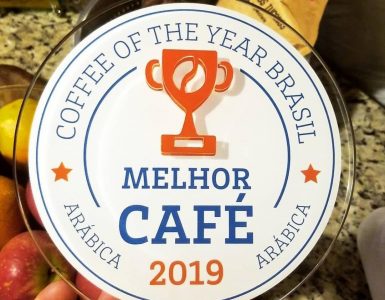Work carried out in the workshop of Syntropic Farming at Herdade do Freixo do Meio, in the region of Alentejo, Portugal, in March/2018.
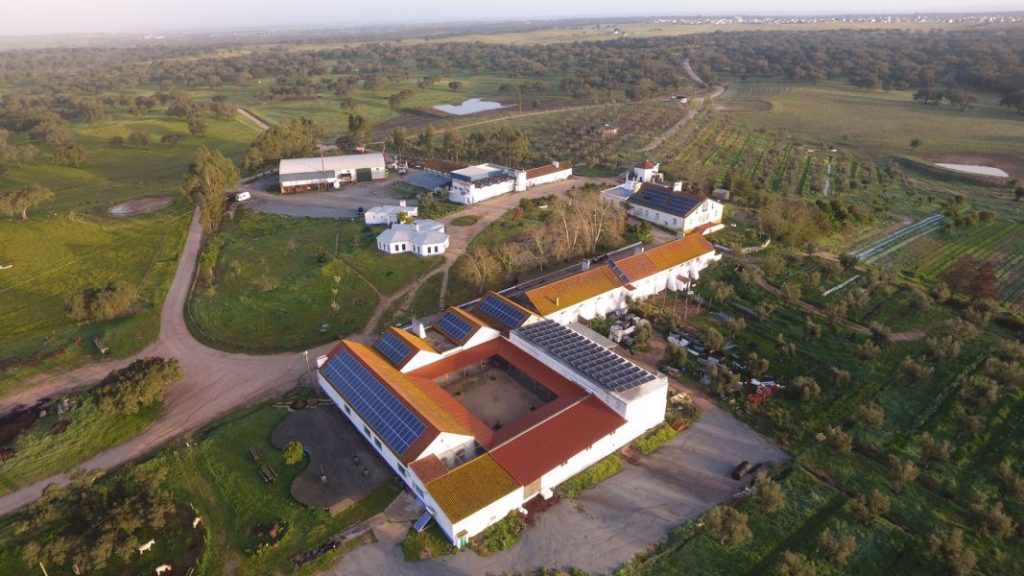
Design model 1:
Example to transform an approximately 50-year-old olive grove into a complex, multi-layered system that will resemble the natural and original ecosystem of the site both in its dynamics and in its operation and stratification.
Current use:
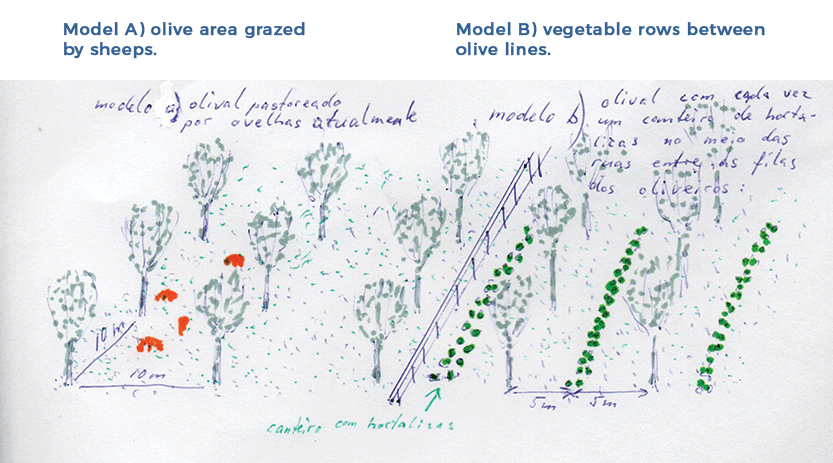
Overview of the system in its current state, contemplating the current crown diameter:

Steps to enrich the system
1 – in the existing olive trees row:
a) illustrative model – current state:

a’) schematic model – current state:

b) illustrative model – intervention step 1: adding 1 more stratum, enrichment with 3 peach trees or pistachios between olive trees

c) illustrative model – intervention step 2: adding another stratum composed of walnut and poplar

What we did during the Workshop
The row of trees has been transformed into a continuous bed where vegetables, herbs, flowers and figs are now planted in a denser way, considering the space, stratum and lifespan of each of these members.
Considering that the resources were still scarce at the time of implantation, we decided to make narrow beds (approximately 40cm wide) proportional in their width to the amount of organic matter we had – given the productive capacity of the existing underbrush in this olive grove. To the extent that we have changed this underbrush to a more functional vegetation that fits the system, composed of more productive grasses and herbaceous known for their very efficient radical system (such as Verbascum, fennel, thistles, carrot, etc.), our resources will increase.
Later, with all the aggregated trees – especially those planted with the intention of producing organic matter, such as poplar, elderberry, Quercus, etc. – we can increase the width of those beds and use them for growing annuals crops of winter and spring, without weeding, soil preparation, neither irrigation, and also without the need of external fertilizers (fertilizers).
2 – Middle Beds:
(identical with respect to the position between the olive trees, with the beds for the vegetables of the “model b”)
Species used other than vegetables:
a) Fruit trees or walnut trees, citrus (lemon, tangerine, orange) or peach or pistachio.
Spacing: every 3 meters 1 tree (medium/low stratum)
b) Vines together with their future living tutors – fig, Morus nigra, Schinus molle, weeping willow.
Plant together all 5 species within 30 cm area along the line (see figure) and 1 vine on both sides.
All the beds, identical to those made in the rows of the olive trees, must be fully occupied with vegetables, aromatic, fig and flowers.
c) Organization of flower beds with vines:
spacing: fruit trees with pistachio/vines along with trees for their tutorial structure
Complete bed composition: (trees, vines and vegetables)

d) Same design of beds with adult trees and vines

The system is composed mostly of deciduous species to be pruned (all of them) annually in the winter. Thereby we acquired abundant organic matter to be able to create wider beds, with a rich layer of ramial material. And, in addition, with sufficient light input and protection of frosts, in order to be able to cultivate a wide set of vegetables – like, for example, tomatoes, peppers, cabbage etc., without the need of fertilizer supply and without irrigation.
3 – Cross section of the same plantation (current olive grove) in 8 or 10 years, with adult trees and vines.

On behalf of Life in Syntropy team…
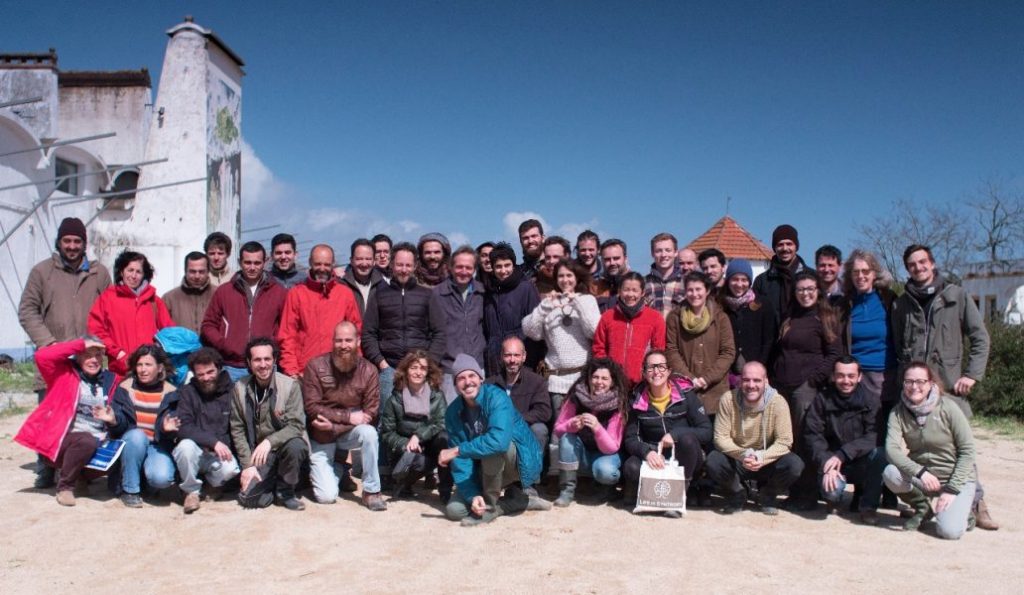
… we want to express our deepest gratitute to Herdade do Freixo do Meio, represented by the competent farmer Alfredo Sandim and to Silvio Gouveia, who made our trip to Portugal possible. We also want to thank all the amazing-hard-working participants. Not one ran away from the rain and the cold, 🙂

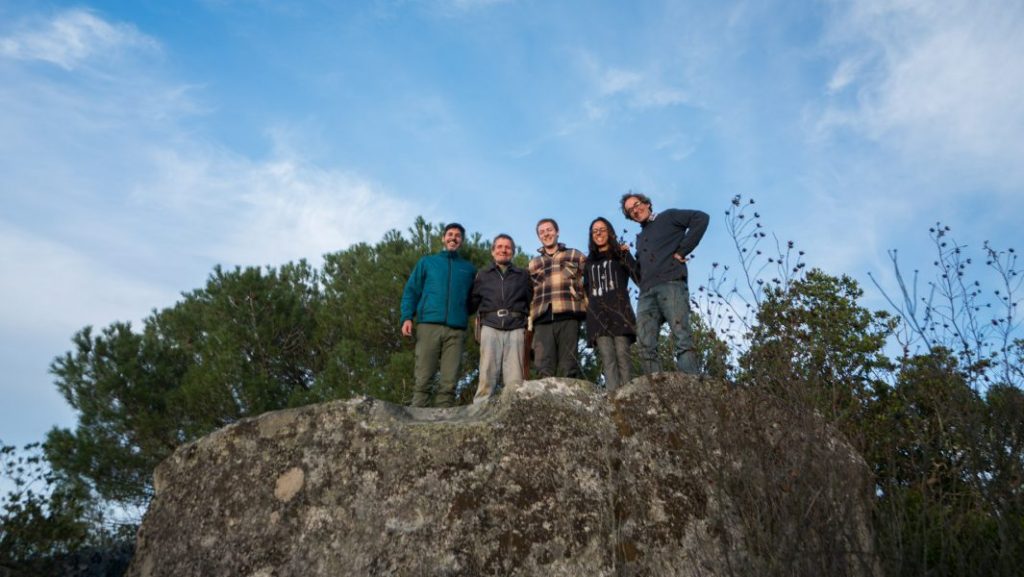
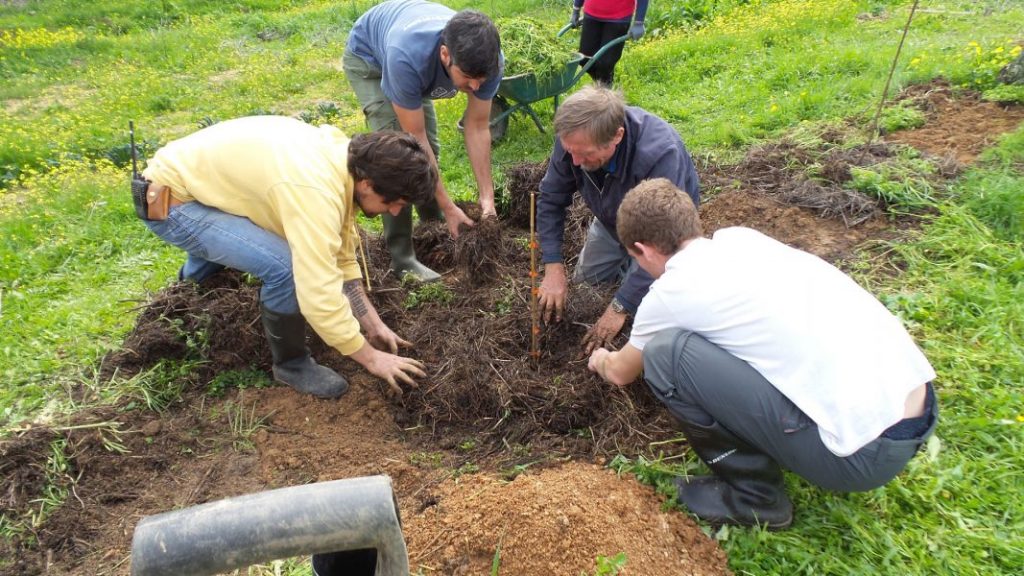
DISCLAIMER
All of Ernst Götsch's designs are specific to where the intervention takes place. Syntropic Farming does not follow or propose recipes. It is based on a set of ethical and evaluative criteria that the Syntropic Farming enables the farmer to plan and manage the ecosystem according to its conditions. History of the area, climate, soil, altitude, rainfall, sun exposure, declivity, access to implements and fertilization (among other factors) determine the species and spacing used. Therefore, the models presented by Ernst Götsch are demonstrative, and should not be indiscriminately copied under the name of Syntropic Farming.
